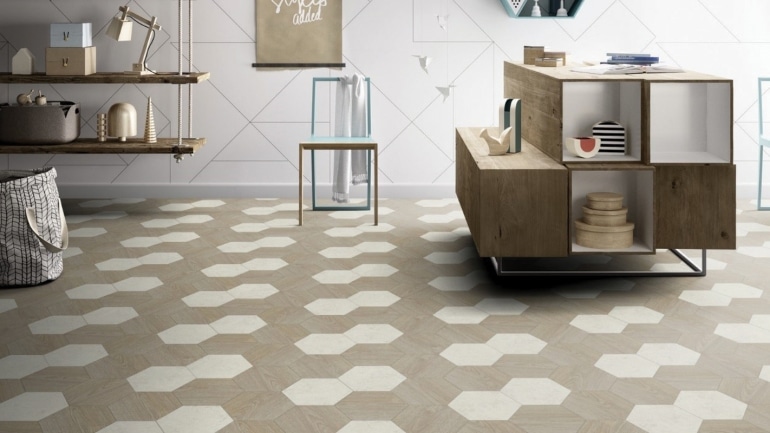When designing a room, every choice carries meaning. Something as basic as shape can change how a space makes you feel. Oval shapes have a special appeal that connects to our love of curves. This article explores why ovals captivate us and how to use them in home décor.
The Alluring History of Ovals
Ovals hold an enduring allure across cultures and eras. Ancient Roman architecture displayed oval forms in baths, temples and amphitheaters. During the Renaissance, the oval became a hallmark shape in cathedral and building design. Today, oval windows, doors, furniture and decor continue gracing contemporary residences.
What explains this omnipresence? The innate symmetry and dynamism of ovals signal perfection and infinity to our brains, sparking positive emotions. Unlike static circles that can feel confined, elongated ovals convey energetic flow and continuity. By echoing natural forms, they induce harmony and timelessness when incorporated into living spaces.
The Soothing Nature of Ovals
Many studies substantiate that people perceive curvilinear shapes as more relaxing than sharp geometrical shapes. The smooth, arched contours of ovals and other rounded forms relate to serenity and gracefulness. So, they succeed in lowering heart rates and calming nervous energies upon interaction.
In high-stress environments like hospitals, oval patterns on ceilings or curved hallway architecture help reduce patient anxiety. Waiting room chairs and decor with oval shapes further reinforce this tranquilizing effect. The interior design services market is to grow by $ 24 billion during 2021-2025 progressing at a CAGR of about 4%. The soothing associations also hold for residences. Oval furniture, fixtures and accessories help cultivate a comforting, nesting quality suited for bedroom and lounge areas.
Ergonomic Oval Furniture
The smooth curvature of oval-shaped furniture offers ergonomic benefits. Oval tables with rounded edges are sought-after for preventing accidental bruises and injuries. Oval chairs and sofas promote healthy spine alignment given their contoured form.
Oval shapes also prevent occupying sharp corners of a space, optimizing room utility. For example, an oval wood coffee table is an excellent choice for seamless traffic flow in living rooms. The versatile silhouette suits both traditional and modern settings.
Space-Enhancing Oval Mirrors
When looking to expand tight interior dimensions, an oval mirror provides instant optical help. Oval mirrors elongate and amplify spaces with their stretched-aligned shape. Hang one to make a small studio apartment or narrow hallway appear brighter and more spacious. Their curving frame edges also prevent harsh reflections by diffusing incoming light for luminous warmth. This softening effect heightens elegance across design styles from glamorous contemporary to vintage-inspired settings.
The Color Psychology of Ovals
| Oval Shape Attributes | Psychological Impact | Design Applications |
| Symmetrical and continuous form | Conveys harmony, perfection, infinity | Foster’s positive emotions, visual cohesion |
| Smooth, arched contours | Perceived as graceful, serene | Helps relax and calm stressed occupants |
| Ergonomic curved edge furniture | Prevents injuries; supports posture | Oval tables, and chairs aligned to the body |
| Elongated mirrored form | Optically enlarges tight spaces | Expand room dimensions with lighting interplay |
An oval’s color influences the emotions and impressions it evokes. Soft neutral hues like off-white, beige and pale gray reinforce the zen, peaceful quality innate to oval forms. These quiet tones allow the subtle power of the actual shape itself to shine. Vibrant shades like emerald green, cobalt blue and marsala red create stimulating contrast when paired with oval contours and silhouettes. For formal decors, deep classic colors like burgundy, hunter green and navy blue align with oval shapes’ old-world grandeur. Let personal preference guide color choices to either harmonize with or stress oval forms’ Attributes.
Dynamic Oval Lighting Schemes
The creative interplay between lighting and oval shapes unlocks many possibilities for infusing spaces with visual intrigue. Suspended lantern-style oval pendants make excellent additions above dining room tables and living room seating arrangements. Their continuous smooth glow enhances perceived spaciousness through dispersed ambient fill light. Lower ceiling heights feel airier. Further opportunities open up by incorporating wall sconces, accent lamps and can lighting. Positioning these fixtures to highlight oval architectural details or furniture forms sculpts captivating chiaroscuro compositions through the alternating contrasts of shadows and highlights.
Integrating Ovals in Diverse Design Approaches
The Renaissance contributed to a 50% increase in the use of symmetry in design. While ovals may convey traditional sophistication at first glance, they prove striking integrated across new and old aesthetics alike after closer examination. Incorporating oval patterns, mirrors, accent pillows and decor pieces into minimalist, modern and contemporary interiors offsets sterile sharp edges with a hint of natural organicism and warmth. This enhances approachability and visual interest. For eclectic bohemian and cottage-style rooms, woven rattan oval mirrors with distressed wood frames inject artisanal texture and charm. Oval shapes provide versatile design potential, their emotional power transcending specific decorative genres.
Final Thoughts
This exploration reveals profound depth beneath the appealing oval. Beyond another aesthetic shape option, ovals relate to our primal affinity for visual harmony, perfection and continuity echoes of infinite space. Harnessing their attributes through thoughtful symmetrical placements allows interior designers to craft uplifting sanctuaries. Oval forms beckon rediscovery given their enduring resonance across millennia. Whether employed or across schemes, they unlock timeless beauty and balance.
FAQs
1. How do ovals anchor interior designs?
Their symmetrical teardrop form creates cohesion akin to the geometric concept of infinity, conveying continuous stability. This centering equilibrium helps unify disparate elements into holistic compositions.
2. Can ovals match a minimal look?
Yes, ovals’ subtle organic shapes add soulful contrast without overpowering clean straight lines synonymous with minimalism. Their graceful curves bring approachability to stark blank negative space.
3. What colors best complement ovals?
Personal preferences and style should guide color pairings. Neutrals allow ovals’ zen to shine while rich vivid hues pop. Deep classic tones like burgundy and hunter green play up their old-world refinement.
